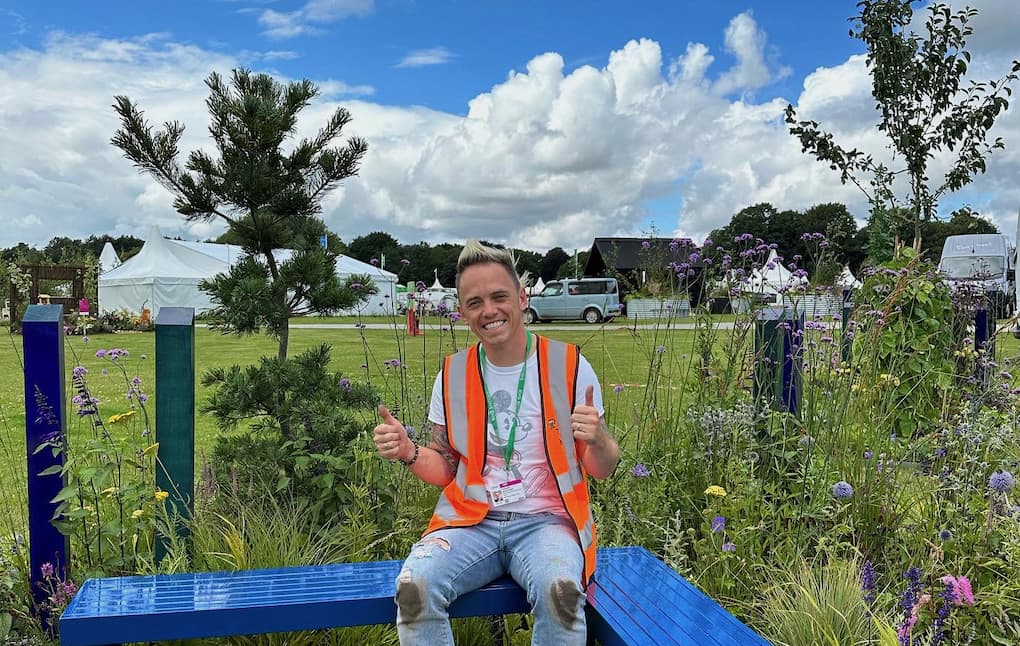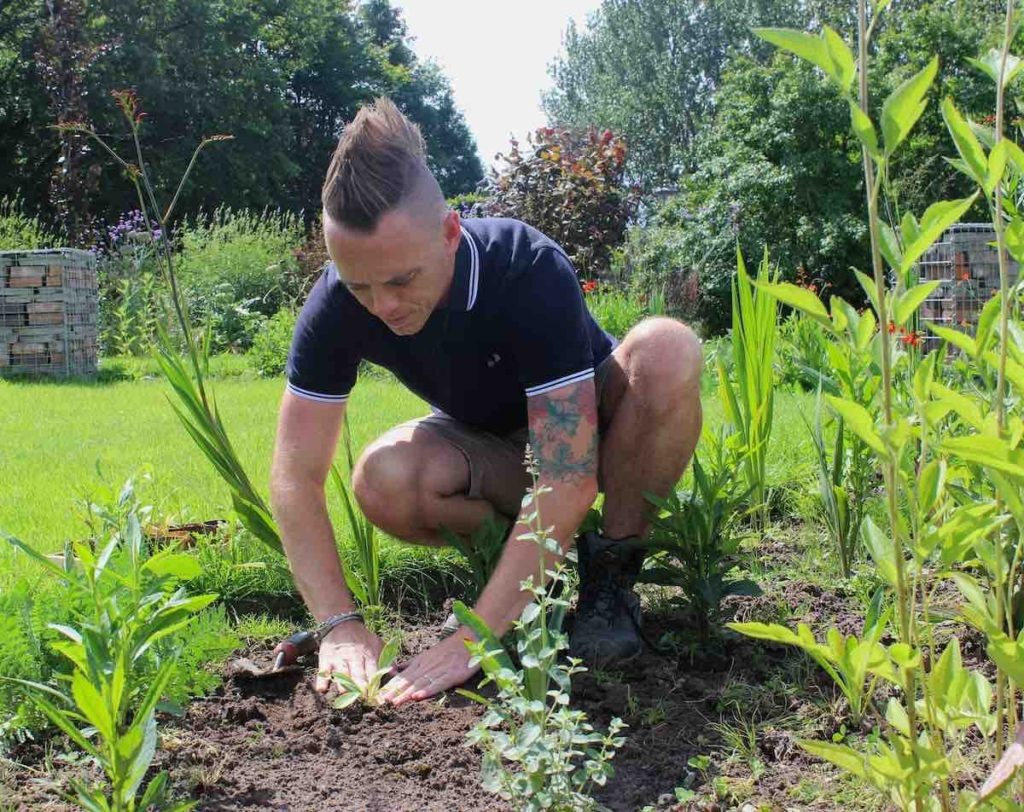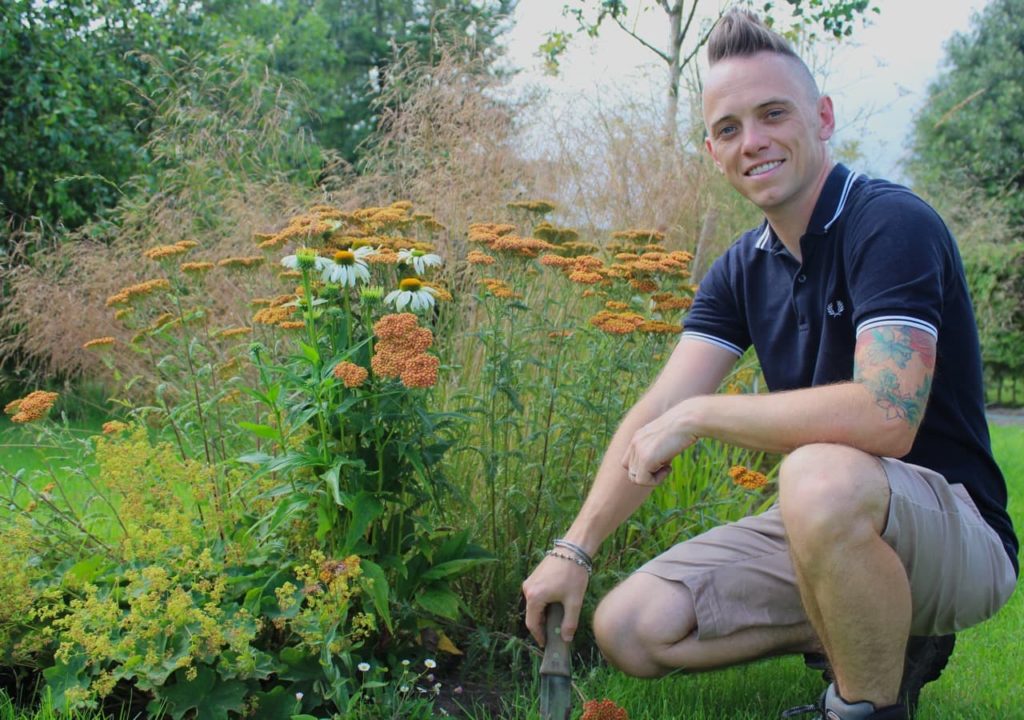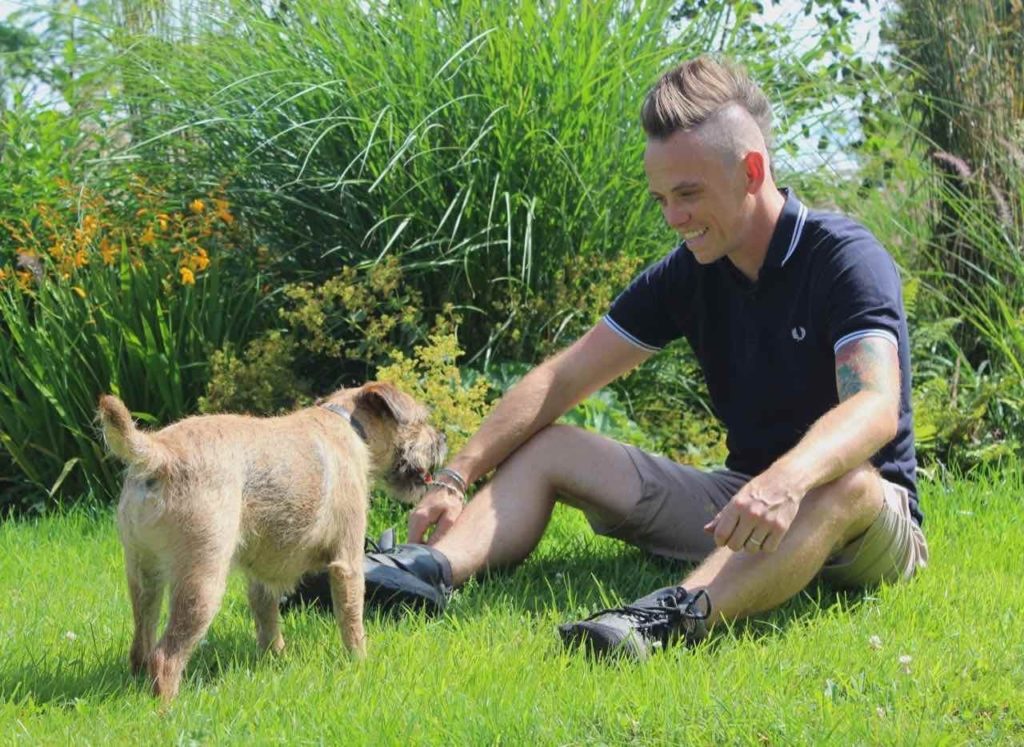The Garden Ninja Lee Burkhill: From A Career In IT To The BBC Garden Rescue Team

Contributions From LEE BURKHILL

Lee Burkhill, better known as 'The Garden Ninja', is an RHS award-winning Garden Designer and TV Presenter who has worked on the BBC’s Garden Rescue for 4 years. Lee also posts regular design and garden tips to his YouTube channel and runs a blog where he connects with those in the community to answer any questions they might have. He trained at The Royal Botanic Garden Edinburgh.
Lee Burkhill is a Garden Designer and TV Presenter who is better known online by his online community as The Garden Ninja.
Having pivoted away from his career in IT nine years ago, Lee has now been part of the BBC’s Garden Rescue team for over four years.
In this interview, I explore the reasons behind Lee’s change of career, his approach to garden design and his relationship with the online gardening community – all in his own words.
Please note that all imagery featured in this guide was provided with permission by Lee Burkhill.
How Did Your Career In Garden Design Begin?
“I’ve always been a hobbyist gardener, even as a small child,” shares Lee.
“My granddad was an allotment gardener who grew his own veg and had a rose garden, so I always used to help him.
“Gardening was an amazing hobby that took me away from work and the stress of life. Even as a teenager, I used to garden in secret because it wasn’t cool. I used to get bullied at school and gardening was the one place I could go to and just switch off.

“Around 8 or 9 years ago, I was in a really stressful job and my husband told me that I needed to find something that I was more passionate about. I had a drive for work and to help people, but I wasn’t meeting it in IT.
“Long story short, I signed up for a design course at RHS Harlow Carr and thought, ‘I’ll just see what happens’. It was like a snowball effect after that!
“In 2016, I won a design competition run by the BBC and the RHS, where I had to create a Feel Good Garden. From there, my career took off.
“It was a beautiful, happy accident, where all the things I used to love to do as a hobby became the garden design business and the YouTube channel.”
Do You Have A Specific Process For Designing?
“My process is always plant-based,” he explains.
“The layout and hard landscaping is important, but for me, plants come first.
“I think about what is going to suit the aspect and soil and start there. I then go about laying out the functions and materials that complement the plants.
“Some gardeners start with the hard landscaping, but I start with the plants and then work my way back so that everything compliments nature, rather than throwing nature at a design.”
What Are You Inspired By?
“I get a lot of inspiration from travel. I travel around a lot in my motorhome during the winter and visit as many gardens and off-the-beaten-track towns and villages as I can, because you can get stuck in your own ideas and limit yourself by doing what you’ve always done.
“Travelling and seeing all of these different influences really inspires me.

“For example, I travelled down to Grenada in Spain and saw tiles, which made me think of mosaics. I’d never used those before and after that, a batch of my designs started to have patterns in them.
“I then drove to Benmore in Scotland and visited their Botanical Gardens where I found evergreen Chilean plants that can cope with our British climate, which I have now started to use in designs where appropriate.
“I never stop looking – there is always something else out there!”
Do You Have A Favourite Memory Of A Garden You’ve Designed?
“My favourite memories are always of those clients that are so engaged that you know when you leave them with the garden, they are going to get stuck in,” Lee shares.
“There’s been a couple of clients over the past few years that still send me pictures of their garden and you can just see their skills developing.
“A lot of people don’t realise that a garden is always evolving and changing and you have to do something to it – it’s not finished after the design is done.
“Because of this, the clients that get involved and start to really understand the plant associations and why they’re there stay with me and are the best to work with.
“When I leave, it always feels my work there is done!”
Where Did The Garden Ninja Come From?
“The Garden Ninja has become a brand in its own right. I started thinking about what to call the Garden Design business after I qualified.
“I thought that it would be strange to name my business after myself and I wanted Garden Ninja to become a community and feel part of something outside of me.
“It was born out of this idea to bring people together and to keep it accessible and approachable.

“One of my very first clients said that when I came into her garden, it was like this Garden Ninja appeared and sorted it all out for her. I loved that, so I decided that would be my name!
“I like to think that the community I’ve curated feel part of something, whether they are a complete beginner or an expert. I can make a living out of design, but the core of the business has to be about helping people along the way.”
What Does A Typical Working Day In The Life Look Like For You?
The typical day for the Garden Ninja is a mix of design and admin,” he explains
“My creativity is usually at its best in the morning, so I do any design work then. All of my designs are hand drawn and then watercoloured, which I always do first thing in the day.
“I then move onto anything physical, like planting jobs or YouTube videos, after lunch. I call this the ‘doing’ part of my day! All of the admin happens at the end of the day when my creative rivers have run dry and I’m tired.
“Having said that, no two days of the same. Some are very design-heavy, whilst others are more planting-based. There’s also the TV work now and I also sometimes write for magazines.
“It’s a real mix between the creativity, the doing and the administration. Over the past few years, I’ve been able to work out how and when to divide up these jobs to suit me.”
What’s Next For You?
“I’m doing a lot of guest lectures and public speaking at the moment which is all about getting people into design.

“I’m also doing the Interflora World Cup in September, which is different for me because it’s floristry [and] not gardening, but the two worlds do merge together quite well.
“What’s truly next for me is spreading my Garden Ninja message through talks by getting out of the screen and in front of real people.”
Do You Have Any Advice For Fledgling Garden Designers?
“You need to really understand your plants, so if you are a complete novice, sign up to a beginner design course, as this will help you learn about plants as well as design,” Lee advises.
“You can just give it a go, but you will struggle without knowing your plants. You don’t have to quit your job to do this, you don’t have to go to university, you don’t have to take out a second mortgage – just find a course that fits with your circumstances.
“You will meet people with a similar mindset, start to build your contacts and it will set you off with a framework. Courses are invaluable and really help to get the wheels moving.
“Like I said, really focus on the plants, as they are what make the garden. If you don’t understand landscaping, you can find a Landscaper to [complete] that part of the project, but plants are always with the designer.”

